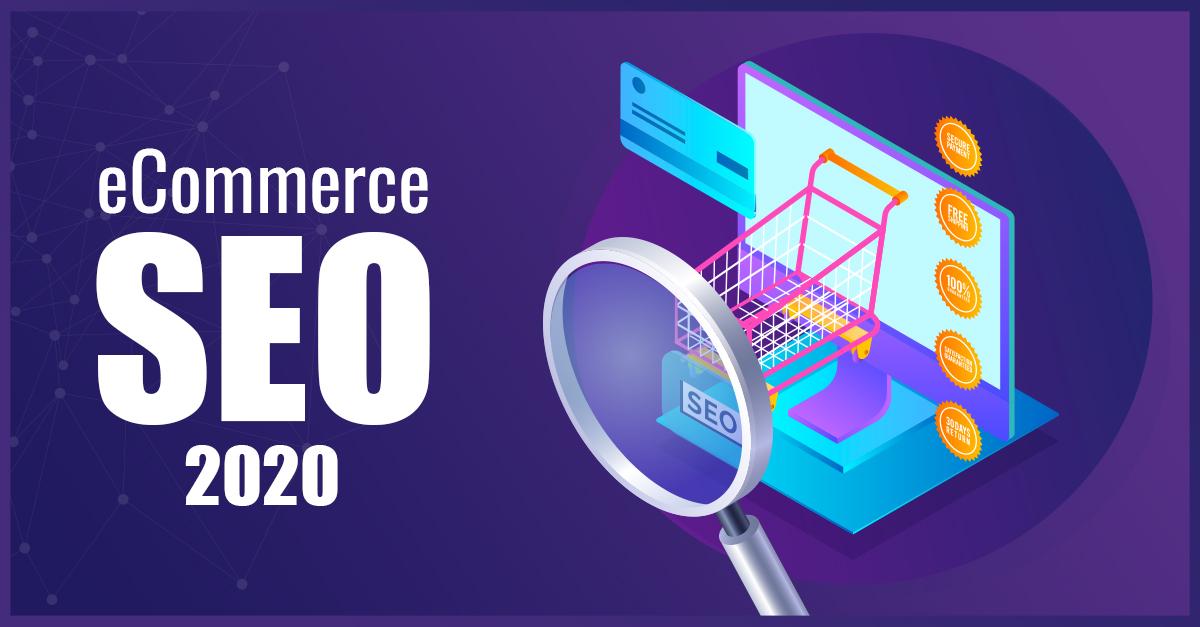Unlock Your Online Store’s potential: The Ultimate Ecommerce SEO checklist
In the bustling world of online shopping, standing out from the crowd can feel like an uphill battle. You’ve poured your heart and soul into your online store—curating the perfect products, designing an eye-catching layout, and crafting compelling descriptions. but what happens when potential customers can’t find you amidst the sea of competitors? That’s where Ecommerce SEO comes into play!
Imagine this: your store is not just another dot on the digital map,but a vibrant destination where customers flock to discover exactly what they need. With the right search engine optimization strategies, you can enhance your visibility, attract more visitors, and ultimately boost your sales. Sounds appealing, right?
In this article, we’ve compiled an unbeatable Ecommerce SEO checklist featuring 16 essential optimizations that can transform your online buisness into a powerhouse. Whether you’re a seasoned seller or just starting out,these actionable tips will guide you in fine-tuning your store for search engines and customers alike. So, let’s dive in and unlock the secrets to elevating your online presence and driving those sales through the roof!
Understanding the Importance of Ecommerce SEO for Your Online Store
In the bustling world of digital commerce, standing out from the competition is crucial. Your online store is more than just a catalog of products; it’s a dynamic platform where potential customers are searching for solutions to their problems. This is where SEO comes into play. By optimizing your ecommerce site for search engines, you’re ensuring that it reaches the right audience at the right time.
Effective ecommerce SEO involves a variety of strategies that focus on making your site more visible in search engine results. Keyword optimization is the first step. Identifying the terms your target audience uses when searching for products similar to yours allows you to tailor your content appropriately. Utilize tools like Google Keyword Planner to discover high-volume keywords that specifically relate to your niche.
another critical aspect is on-page optimization. this includes optimizing product descriptions, images, and meta tags. Each product page should have a unique and compelling description that not only includes your chosen keywords but also engages the reader. High-quality images should be properly tagged and optimized for fast loading times, as this substantially impacts user experience and search rankings.
Don’t overlook technical SEO.Ensuring your website has a clean structure, mobile responsiveness, and fast loading speeds is paramount. search engines favor sites that provide a seamless user experience. Tools like Google PageSpeed Insights can definitely help you identify areas for enhancement. Furthermore, implementing structured data (schema markup) can enhance your search visibility by enabling rich snippets that display additional product details directly in search results.
Building authority through link-building strategies is essential as well. Earning backlinks from reputable sites not only drives traffic but also signals to search engines that your site is trustworthy. Consider guest blogging,collaborating with influencers,or sharing your expertise on industry forums to cultivate these valuable links.
don’t forget the importance of local SEO if you have a physical store. Including your business in local listings, optimizing for local keywords, and encouraging customer reviews can significantly boost your visibility among nearby shoppers.
incorporating these strategies will not only enhance your online presence but also lead to increased traffic and sales. Investing time in ecommerce SEO is a step toward building a enduring business that thrives in a competitive marketplace. Each optimization you make is a building block toward a stronger, more visible online store.

mastering Keyword Research to Drive Targeted Traffic
When it comes to boosting your online store’s visibility, mastering keyword research is foundational. Understanding what your potential customers are searching for can dramatically influence your traffic and ultimately, your sales. By identifying the right keywords, you can tailor your content to align with user intent, driving quality traffic to your site.
Start by brainstorming a list of topics relevant to your products. Think about what problems your products solve or what questions your audience might have. From there, utilize keyword research tools such as Google Keyword Planner, Ahrefs, or SEMrush to uncover keywords with high search volume and manageable competition. Here are some tips to refine your keyword list:
- Focus on Long-Tail Keywords: These are frequently enough less competitive and more specific to user intent.
- Analyze Competitors: Check which keywords your competitors are ranking for and identify gaps.
- Consider search Intent: Distinguish between informational, navigational, and transactional searches.
once you’ve gathered your keywords, categorize them based on themes or product categories. This helps in structuring your website and its content effectively. As an example,if your store sells beauty products,you might categorize keywords into skincare,makeup,and hair care,allowing you to create focused content and product pages that resonate with what users are searching for.
Keyword Mapping is another essential step. This involves assigning specific keywords to distinct pages on your site. This strategy ensures that each page targets a unique set of keywords, which helps to avoid internal competition and improves your chances of ranking higher. Here’s a simple example:
| Page | Target Keyword |
|---|---|
| Skincare Products | best moisturizers for dry skin |
| Makeup Tutorials | how to apply foundation |
| Hair Care Products | best shampoo for curly hair |
don’t forget to revisit and refine your keyword strategy regularly.Trends change, and so do consumer behaviors. By staying updated and adjusting your approach, you can maintain an edge over competitors and continue to attract targeted traffic that converts.Embrace the power of keyword research, and watch your online store thrive!
Crafting Compelling Product Descriptions That Convert
When it comes to online shopping, a product description is more than just a few lines of text; it’s your opportunity to engage with potential customers and convince them to make a purchase. Compelling product descriptions can significantly impact your conversion rates, transforming casual browsers into loyal buyers. to achieve this, focus on storytelling, emotional connection, and the unique value your product offers.
Start with a captivating hook. The first sentence should grab attention promptly. Use vivid language that paints a picture in the reader’s mind. As a notable example, rather of saying, “This is a red dress,” you might say, “Unleash your inner goddess with this stunning scarlet dress that hugs your curves in all the right places.” This approach not only describes the product but also evokes an image and feeling that resonates with the customer.
Next, highlight the benefits rather than just the features. While it’s importent to list what the product is made of or its dimensions, the key to a great description lies in explaining how those features translate into benefits for the user. Ask yourself: How will this product improve the customer’s life? For example:
| Feature | Benefit |
|---|---|
| Water-resistant fabric | stay dry and agreeable in any whether. |
| Eco-pleasant materials | Feel good about your purchase while helping the planet. |
Don’t forget to incorporate SEO keywords naturally into your descriptions. This not only helps improve your visibility on search engines but also makes your content more relevant to what your customers are searching for. Use tools like Google Keyword Planner to identify the best keywords for your product and weave them seamlessly into your text. However, avoid keyword stuffing; the focus should remain on providing valuable information that resonates with your audience.
Utilize social proof to build trust. Incorporate customer reviews, testimonials, or even user-generated content that showcases how others are enjoying your product. This not only provides credibility but also encourages potential buyers to envision themselves as part of a community that loves your brand. A small quote from a happy customer can do wonders for your conversion rate!
include a strong call to action at the end of your description. encourage shoppers to take the next step in their buying journey. Phrases like “Add to cart now to experience the magic!” or “Join countless satisfied customers who have transformed their wardrobe with this piece!” create a sense of urgency and encourage immediate action.
Optimizing Product Images for Better Visibility
in the competitive world of ecommerce, the visual appeal of your product images can make or break a sale. High-quality images not only attract visitors but also play a crucial role in SEO. Here are some effective strategies to ensure your product images are optimized for better visibility.
Choose the Right File Format
Using the appropriate file format can drastically affect image quality and loading time. Consider these common formats:
- JPEG: Best for photographs with rich colors and gradients.
- PNG: Ideal for images requiring transparency or sharp edges.
- webp: A modern format that combines the best of both worlds, providing high quality with smaller file sizes.
Optimize Image Size
Large image files can slow down your website,leading to a poor user experience. Use tools like ImageOptim or TinyPNG to compress images without sacrificing quality. Aim for images that are under 100KB whenever possible. The faster your page loads, the better your chances of retaining customers.
Utilize Descriptive File Names
Before uploading images, rename them with relevant keywords. Instead of a generic name like “IMG_1234.jpg,” use something like “red-leather-handbag.jpg.” This not only aids in SEO but also helps search engines understand the context of the image,enhancing your visibility in search results.
Implement Alt Text Effectively
Adding alt text to your images is essential for accessibility and SEO. This descriptive text tells search engines what the image depicts. Use clear,concise language and include relevant keywords,but avoid keyword stuffing.Such as:
| Image Type | Suggested Alt Text |
|---|---|
| Product Image | Comfortable blue sneakers for running |
| Banner Image | Winter sale on outdoor gear |
Consider Lazy Loading
Implementing lazy loading can significantly improve page load speeds. This technique ensures that images are only loaded when they are visible in the user’s viewport, reducing the initial load time of your page. Most modern ecommerce platforms offer lazy loading as a built-in feature or plugin.
enhance user Engagement with Interactive Images
Consider using interactive elements like 360-degree views or zoom functionality. These features allow customers to explore products in detail, increasing engagement and the likelihood of conversion. The more your customers can interact with your images, the better their shopping experience will be.

Leveraging User Reviews and Testimonials to Boost credibility
In the bustling world of eCommerce, standing out among the competition is crucial, and one of the most effective ways to do this is by leveraging user reviews and testimonials. These authentic voices not only provide social proof but also add a layer of credibility to your online store that customary marketing tactics simply can’t match.
User reviews serve as a modern-day word-of-mouth referral, and potential customers frequently enough look for them before making a purchase. When they see favorable reviews, it instills a sense of trust that encourages them to proceed with their buying decision.Consider implementing a system that encourages customers to leave feedback after their purchase. You can do this through:
- Email follow-ups
- Incentives like discounts on future purchases
- Simple prompts on your website
Moreover, showcasing these reviews prominently on your product pages is essential. Create a dedicated section that highlights top-rated testimonials, ideally detailing the customer’s experience with the product. This not only enhances the user experience but also contributes to your site’s SEO efforts by providing fresh, relevant content.
Don’t overlook the power of negative reviews either. Addressing less favorable feedback and demonstrating how you resolve issues can significantly enhance your credibility. Customers appreciate transparency, and a well-handled negative review can often sway a shopper’s opinion in your favor. Consider displaying a table that summarizes customer feedback, showing the number of reviews, average ratings, and common themes:
| Product | Number of Reviews | Average Rating |
|---|---|---|
| Product A | 150 | 4.8 |
| Product B | 200 | 4.5 |
| Product C | 75 | 3.9 |
Lastly, consider creating a testimonials page on your site, where satisfied customers can share their stories in detail. This not only boosts your search engine optimization by adding rich content but also creates a narrative around your brand that potential customers can connect with. By weaving these testimonials into your overall marketing strategy,you position your brand as trustworthy and customer-focused,ultimately driving sales and building loyalty.
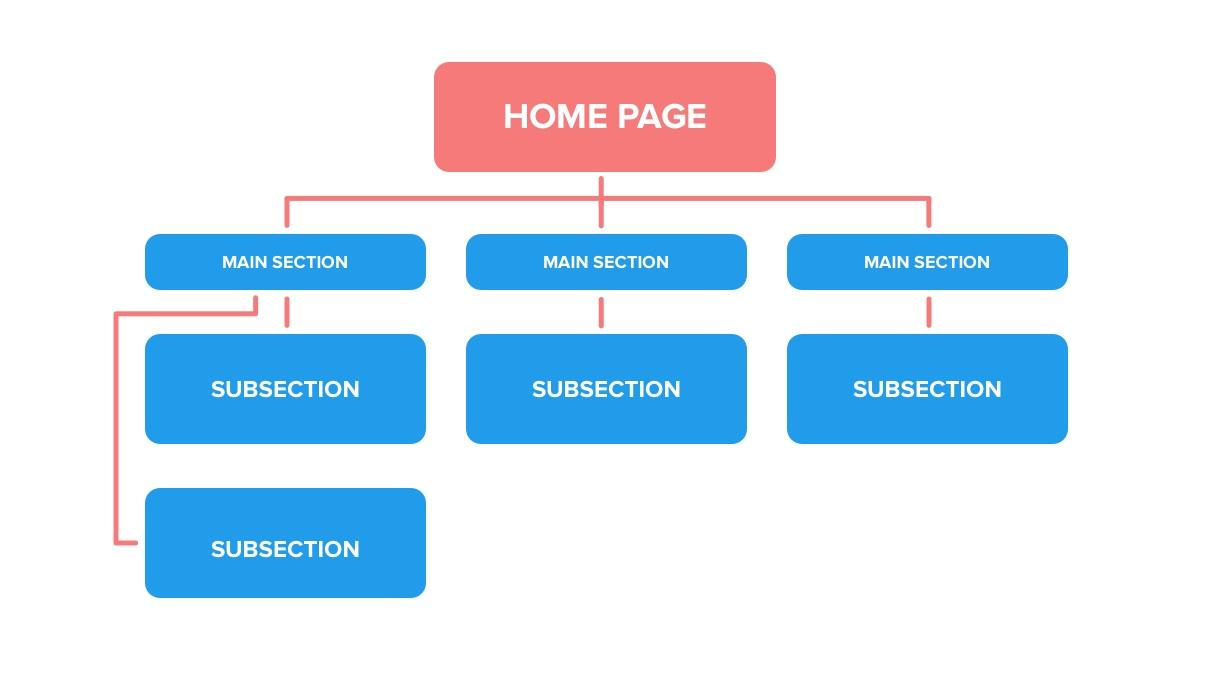
Enhancing Site Structure and Navigation for User Experience
Creating a seamless site structure is essential for enhancing user experience on your ecommerce platform. A well-organized website not only makes it easier for customers to find what they’re looking for but also positively impacts your search engine rankings. Here are some key strategies to consider:
- Logical Categorization: Ensure your products are organized into clear, logical categories. Use descriptive category names that reflect the products you offer, making it intuitive for users to navigate.
- Breadcrumb Navigation: Implement breadcrumb trails that display the user’s path. This feature helps visitors backtrack easily and understand their location within your site.
- Search functionality: Integrate a robust search bar that allows users to find products quickly. Consider adding filters to refine results based on various attributes like price, size, and colour.
- Mobile Optimization: Ensure your navigation is just as effective on mobile devices. A responsive design will adapt to diffrent screen sizes, keeping the user experience consistent.
Another vital aspect of enhancing site structure is the use of internal linking. By strategically linking related products and categories, you keep users engaged longer, perhaps increasing your average order value.Here are some ways to implement effective internal linking:
- Related Products: On product pages, feature links to related items or accessories. This not only aids navigation but also encourages additional purchases.
- Content Marketing: Create blog posts or guides that link back to your product categories. This not only helps with SEO but also positions your brand as an authority in your niche.
- Clear Calls-to-Action: Use prominent buttons and links directing users to popular categories, promotions, or best-selling products, guiding them toward a purchase.
a well-structured site should prioritize user engagement and feedback. Consider incorporating features that encourage users to share their thoughts:
- Customer Reviews: Allow customers to leave reviews and ratings on product pages. This builds trust and provides social proof, significantly influencing purchase decisions.
- Easy Access to Support: Ensure users can easily find customer service options, such as live chat, FAQs, and contact forms. Speedy access to support can dramatically enhance user satisfaction.
By focusing on these aspects of site structure and navigation, you create an environment where users feel comfortable and confident while exploring your store. In turn, this can lead to higher conversion rates and long-term customer loyalty.

Implementing Schema Markup for Rich Snippets and Enhanced Listings
Implementing schema markup on your eCommerce site can significantly boost your visibility in search engine results. This structured data helps search engines understand your content better, which can lead to rich snippets that showcase additional information about your products directly in the search results. When potential customers see enhanced listings, they’re more likely to click through to your site.
To get started, consider these key schema types relevant for eCommerce:
- Product schema: This allows you to display product details like name, price, availability, and review ratings.
- Breadcrumb Schema: Helps search engines understand the structure of your site, improving navigation and user experience.
- Review Schema: Displays star ratings and reviews directly in search results, enhancing credibility.
- Offer Schema: Shows special deals and promotions, encouraging users to click on your links.
Implementing schema markup requires adding specific JSON-LD code to your website’s HTML. You can use various tools,like Google’s Structured Data Markup Helper,to generate the necessary code snippets. Here’s a simple example of how your product schema could look:
{
"@context": "https://schema.org/",
"@type": "Product",
"name": "Stylish Sneakers",
"image": "https://example.com/image.jpg",
"description": "Comfortable and stylish sneakers for all occasions.",
"brand": {
"@type": "Brand",
"name": "Sneaker Co."
},
"sku": "12345",
"offers": {
"@type": "Offer",
"url": "https://example.com/product/12345",
"priceCurrency": "USD",
"price": "59.99",
"itemCondition": "https://schema.org/NewCondition",
"availability": "https://schema.org/InStock"
}
}
After implementing schema markup, use Google’s Rich Results Test tool to verify that your structured data is correctly formatted and eligible for rich snippets. Regularly check for errors or warnings that could hinder your listings’ performance.
Lastly,keep in mind that schema markup is not a set-it-and-forget-it strategy. As you update product information, add new items, or run promotions, ensure your schema markup reflects these changes. By maintaining accurate and up-to-date structured data, you’ll enhance your chances of being featured in rich snippets, ultimately driving more traffic and sales to your online store.
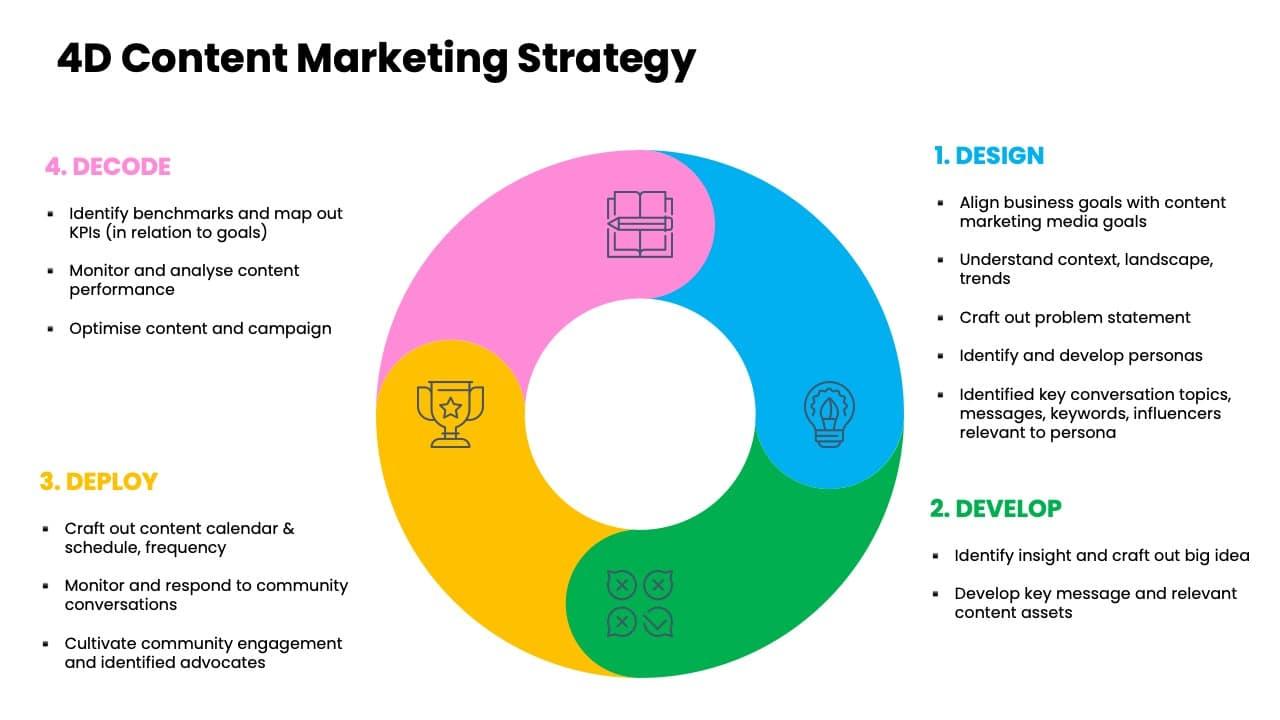
Creating an Effective Content Marketing Strategy to Build Authority
Building authority through Content Marketing
To position your online store as a trusted authority in your niche, an effective content marketing strategy is essential. It’s not just about selling products; it’s about creating a valuable resource that resonates with your audience. Here’s how to effectively create and implement such a strategy:
Understand Your Audience
The foundation of any content marketing strategy is a deep understanding of your audience. Consider conducting surveys or utilizing analytics tools to gather insights about their preferences and pain points. Ask yourself:
- What are the common questions my customers have?
- What content formats do they prefer? (blogs, videos, infographics)
- What are their interests beyond the products I sell?
Create Valuable, Relevant Content
Once you know your audience, it’s time to create content that speaks to them. focus on delivering value through:
- How-to guides that help solve problems related to your products.
- Blog posts that provide industry insights or trends.
- Videos that demonstrate product use or share customer testimonials.
Every piece of content should serve a purpose and contribute to your authority in the market.
Optimize for Search Engines
High-quality content is only effective if it can be found. Incorporate SEO best practices to ensure your content ranks well in search results. this includes:
- Using relevant keywords naturally throughout your content.
- Optimizing meta descriptions and title tags.
- Creating internal links to improve site navigation and authority.
Engage with Your Audience
Building authority isn’t a one-way street; it requires engagement. Encourage your audience to interact with your content by:
- Responding promptly to comments and questions.
- Sharing user-generated content and testimonials.
- Encouraging social media shares to broaden your reach.
Measure and Refine Your Strategy
always measure the effectiveness of your content marketing efforts. Utilize tools like Google Analytics to track:
| Metric | Importance |
|---|---|
| Traffic Sources | Understand where your audience is coming from. |
| Bounce Rate | Identify content that may need improvement. |
| Conversion Rate | Measure how well your content drives sales. |
Use this data to refine your content strategy continuously, ensuring it evolves with your audience’s needs and preferences. Through consistent effort and strategic planning,you can establish your online store as an authority in your industry.
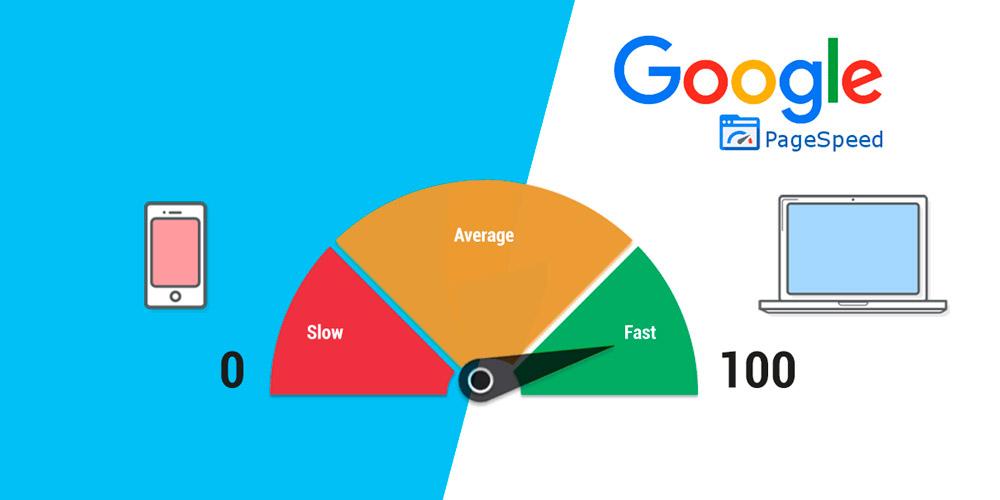
Improving Page Speed for a Seamless Shopping Experience
In today’s fast-paced digital landscape, the importance of page speed cannot be overstated, especially when it comes to eCommerce. Shoppers expect a seamless experience, and slow-loading pages can lead to higher bounce rates and lost sales. By optimizing your online store’s page speed, you not only enhance user experience but also boost your search engine rankings—a win-win for any online retailer.
To kickstart your efforts, here are some effective strategies to improve loading times:
- Image Optimization: Compress images without sacrificing quality. Use modern formats like WebP for faster loading.
- Minimize HTTP Requests: Reduce the number of elements on your page to decrease loading times. Combine CSS and JavaScript files where possible.
- Leverage Browser Caching: Enable caching to allow returning visitors to load your page faster by storing static resources in their browser.
- Use a Content Delivery Network (CDN): Distribute your content globally so it can be delivered from the nearest server, speeding up access for your users.
Consider using tools like Google PageSpeed Insights or GTmetrix to analyze your website’s performance. These tools provide actionable insights and specific recommendations tailored to your unique site needs. To help visualize the impact of these optimizations, here’s a simple comparison of loading times before and after implementing speed improvements:
| Optimization | before (Loading Time) | After (Loading Time) |
|---|---|---|
| image Optimization | 3.5 seconds | 1.2 seconds |
| Minimize HTTP Requests | 4.0 seconds | 2.0 seconds |
| Leverage Browser Caching | 3.8 seconds | 1.5 seconds |
| Use of CDN | 3.0 seconds | 1.0 seconds |
It’s also essential to monitor your site’s performance regularly. A sudden increase in loading times can indicate issues that need immediate attention,such as server problems or third-party script slowdowns. By being proactive in monitoring and optimizing,you can maintain a consistently fast shopping experience for your customers.
Ultimately, a fast-loading online store is not just a technical necessity; it’s a vital part of your customer’s shopping journey. By implementing these strategies, you’ll not only enhance user satisfaction but also drive conversions and foster customer loyalty. Remember,each millisecond counts when it comes to retaining eager shoppers. Invest in your page speed today for a more effective eCommerce presence!
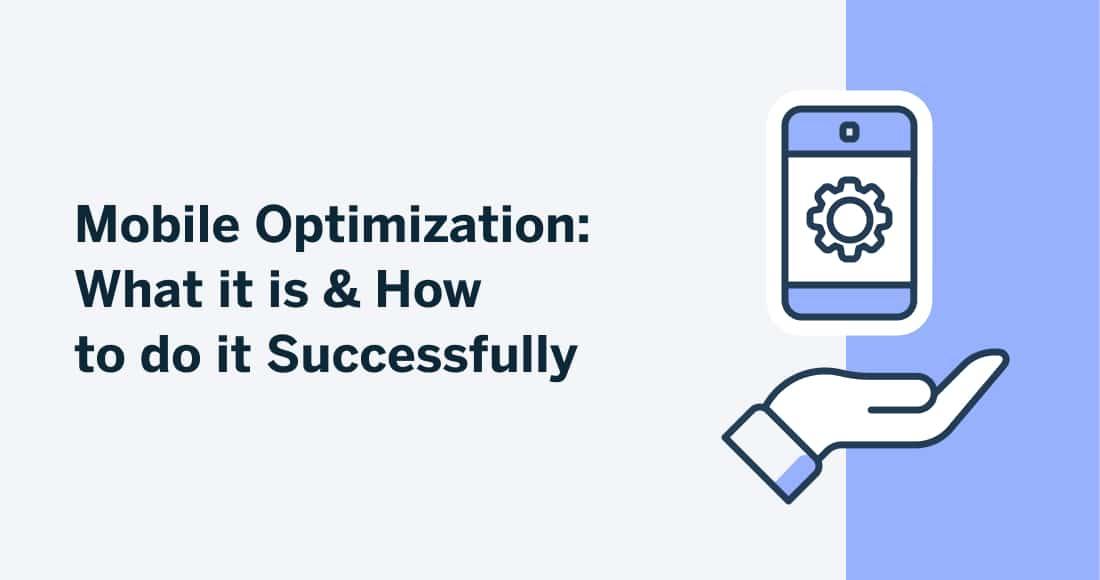
Mobile Optimization: Making Your Store Accessible on Any Device
In today’s fast-paced digital landscape, ensuring your online store is optimized for mobile devices is not just an option; it’s a necessity. With more than half of all internet traffic coming from mobile users,providing a seamless shopping experience on smartphones and tablets is crucial for capturing and retaining customers. Here’s how to elevate your mobile optimization game.
First and foremost, responsive design is key. This means your website should automatically adjust its layout and content to fit any screen size. A responsive site not only improves user experience but is also favored by search engines, boosting your SEO. Make sure to:
- Use fluid grids to create flexible layouts.
- Ensure images are optimized for quick loading.
- Test your design on various devices and orientations.
Page load speed is another critical factor in mobile optimization. A delay of just a few seconds can lead to significant drop-offs in conversion rates. To enhance loading times:
- Minimize HTTP requests by combining files.
- Utilize browser caching to speed up repeat visits.
- Implement content delivery networks (CDNs) for faster access to your resources.
Don’t forget about touch-friendly navigation. With a majority of users navigating via touch screens, your menu should be easy to use without requiring precision clicks. Consider these tips:
- Make buttons larger and well-spaced.
- Utilize drop-down menus that are easy to tap.
- Include a search bar that’s easy to locate and use.
Lastly, think about content layout. Mobile users prefer concise and easily digestible information.Keep your content straightforward by:
- Using short paragraphs and bullet points.
- Incorporating engaging visuals that complement text.
- Providing clear calls-to-action that stand out.
| Mobile Optimization Tips | Benefits |
|---|---|
| Responsive Design | Improves SEO and user experience |
| Fast Load times | Reduces bounce rates and increases sales |
| Touch-friendly Navigation | Enhances usability on mobile devices |
| Concise Content | Keeps users engaged and informs quickly |
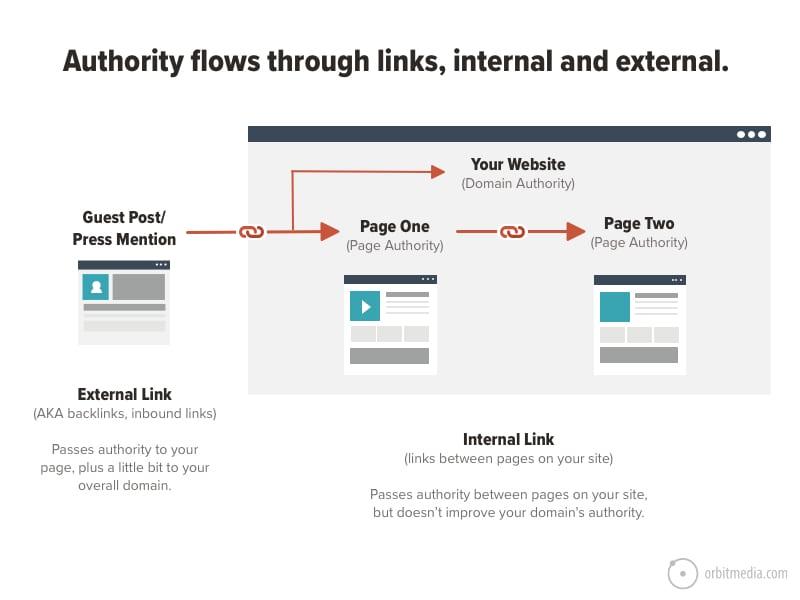
Utilizing Internal Linking to Improve SEO and User Engagement
Internal linking is a powerful yet often overlooked tool that can significantly enhance both your SEO strategy and user engagement on your ecommerce site. By effectively linking to relevant pages within your own website, you not only guide users through their shopping journey but also distribute page authority, helping search engines understand the structure and relevance of your content.
To get started, consider the following benefits of internal linking:
- Improved Navigation: Internal links help users easily find related products or information, reducing bounce rates and keeping them on your site longer.
- Enhanced Crawlability: Search engines use internal links to discover and index pages on your site. A well-structured linking strategy can help ensure that all your important pages get the attention they deserve.
- Increased Page Authority: By linking to your key pages from high-traffic or high-authority pages, you can boost their rankings in search results.
When crafting your internal links, keep these best practices in mind:
- Use Descriptive Anchor Text: Make sure your anchor text is clear and informative. Instead of generic phrases like “click here,” use specific keywords related to the linked page.
- Link to Relevant Content: Ensure that the pages you link to are contextually relevant to the content your users are currently viewing.
- limit the Number of Links: Too many links can overwhelm users and dilute their effectiveness. Focus on a few key links that truly add value.
Consider creating a visual portrayal of your internal linking strategy with a table that outlines your main product categories, their respective subcategories, and suggested internal links:
| Main Category | Subcategory | Suggested Internal Link |
|---|---|---|
| Electronics | Smartphones | View Smart Phones |
| Fashion | Men’s Clothing | Explore Men’s Clothing |
| home & Garden | Furniture | Shop Furniture |
Lastly, don’t forget to review your internal linking strategy regularly. Analyze user behavior and make adjustments based on which links perform well and which don’t. This ongoing optimization can lead to higher engagement rates and improved search rankings over time, creating a seamless experience for your customers while maximizing your store’s visibility.
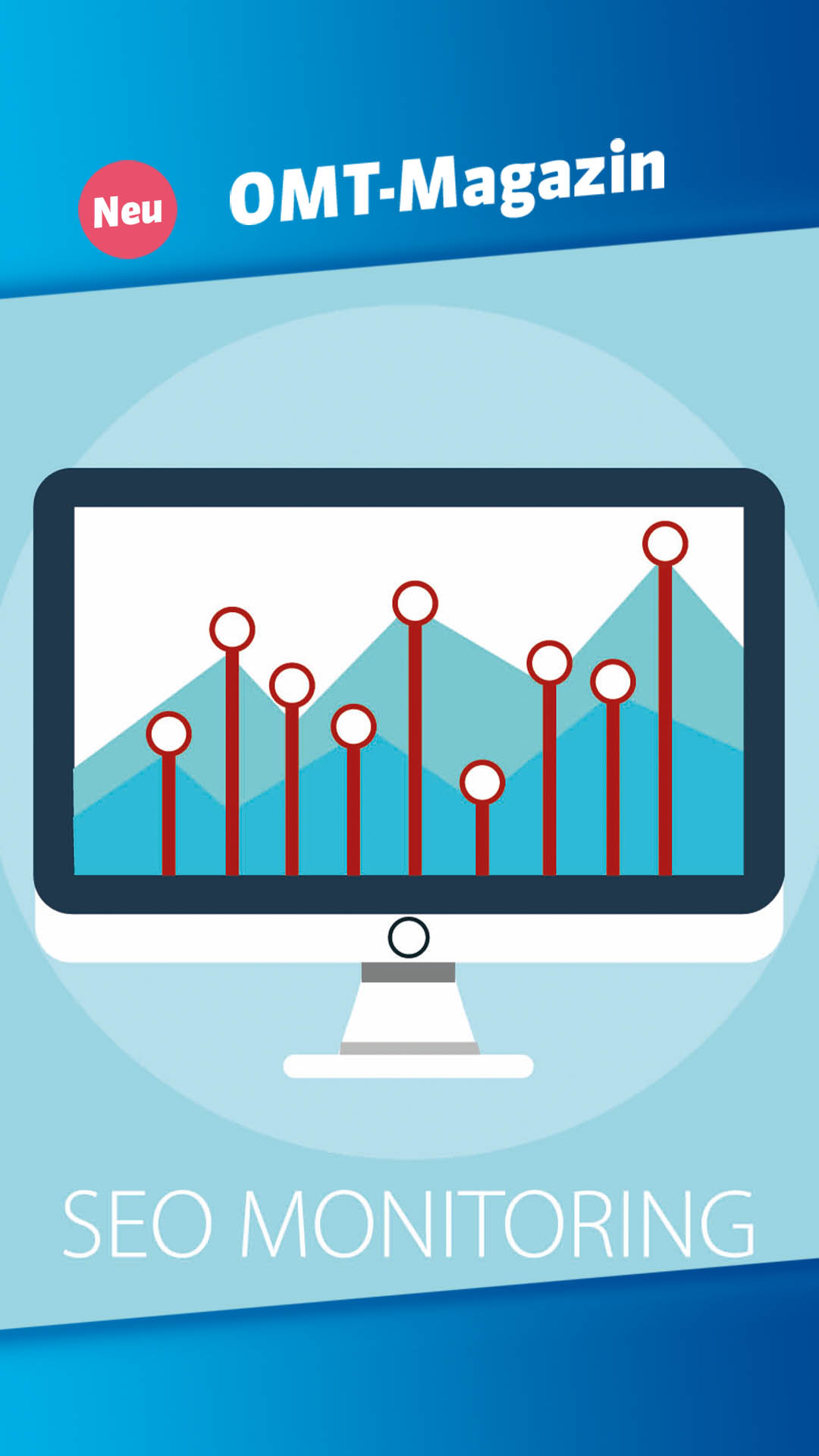
Tracking and Analyzing your SEO Efforts for Continuous Improvement
To ensure your ecommerce store remains competitive, it’s essential to track and analyze your SEO efforts. This process helps you identify what’s working well and what needs adjustment. Start by setting clear KPIs (Key Performance Indicators) that align with your business goals. Common KPIs for ecommerce SEO include:
- Organic Traffic: monitor the number of visitors coming from search engines.
- Conversion Rates: Track how many visitors make a purchase after landing on your site.
- Keyword Rankings: Keep an eye on how your targeted keywords are performing.
- Bounce Rate: Analyze how many visitors leave your site after viewing only one page.
Once you’ve established your KPIs,use tools like Google Analytics,SEMrush,or Ahrefs to gather data. These platforms provide valuable insights into user behavior, keyword performance, and overall site health. For instance, Google Analytics can help you understand:
| Metric | Importance |
|---|---|
| Traffic Sources | Identifies where your visitors are coming from, guiding your marketing efforts. |
| User Engagement | Measures how users interact with your site, indicating content effectiveness. |
| Goal completions | Tracks specific actions taken by users, such as completing a purchase. |
Regularly reviewing this data enables you to spot trends and make informed decisions. For example, if you notice a significant drop in organic traffic, it might be time to reassess your SEO strategies or update your content. Moreover, segmenting your data can reveal more granular insights. Consider breaking down your analysis by:
- Device Type: understand how mobile vs. desktop users interact with your store.
- Geographic Location: Tailor your SEO efforts based on the regions driving traffic.
- Landing Pages: Identify which pages are most effective at converting visitors.
Don’t forget to regularly conduct A/B tests on different elements of your site,such as product descriptions,titles,or calls to action. this experimentation can uncover which variations lead to better SEO performance and higher conversion rates. By fostering a culture of continuous improvement, you’ll ensure that your ecommerce store adapts and thrives in the ever-evolving online landscape.
frequently Asked Questions (FAQ)
Q&A: Ecommerce SEO Checklist: 16 Optimizations for Your Online Store
Q1: why is SEO so important for my online store?
A1: Great question! SEO,or Search Engine Optimization,is crucial because it helps your online store become more visible in search engine results. When potential customers search for products you sell, good SEO practices ensure your store appears at the top. This visibility drives traffic to your website, increases sales, and ultimately boosts your revenue. It’s like putting up a big neon sign that says, “Shop here!” in the crowded marketplace of the internet.Q2: What are some foundational SEO practices I should implement?
A2: Absolutely, let’s start with the basics! First, focus on keyword research to identify what terms your customers are using to search for products.Than, optimize your product descriptions, meta titles, and meta descriptions using these keywords. Don’t forget about alt tags for images and URL structures; they should be clear and include relevant keywords too. Having a clean and organized site structure also helps search engines crawl your store more efficiently.
Q3: How do I optimize product pages specifically?
A3: Optimizing product pages is essential since these are the pages that convert visitors into buyers. Start by writng unique and engaging product descriptions that include your target keywords. Use high-quality images with descriptive file names and alt tags. Additionally, incorporate customer reviews and ratings to build trust and improve your SEO.And let’s not forget about speed—make sure your product pages load quickly to enhance user experience and reduce bounce rates.
Q4: Should I focus on mobile optimization too?
A4: Absolutely! with a growing number of shoppers using mobile devices, optimizing for mobile is non-negotiable. Google prioritizes mobile-friendly sites, so make sure your online store is responsive. Test your site’s mobile usability regularly, optimize images for faster load times, and ensure that navigation is easy on smaller screens. A seamless mobile experience can significantly boost your conversion rates!
Q5: How can I use content marketing to improve my SEO?
A5: Content marketing is a powerful tool! By creating valuable content—like blog posts, guides, or how-to videos—you can attract more visitors to your site. Use this content to answer common questions related to your products or industry. Incorporate relevant keywords naturally, and encourage readers to share your content. This not only drives traffic but also improves your authority in your niche, which search engines love.
Q6: what are some advanced SEO tactics for an ecommerce site?
A6: once you have the basics down, it’s time to get creative! Consider implementing structured data (Schema markup) to help search engines understand your products better, which can lead to rich snippets in search results. Use internal linking strategically to guide visitors through your site and improve navigation.Lastly, explore backlink strategies by collaborating with influencers or industry blogs to increase your authority and reach.
Q7: How do I measure the success of my SEO efforts?
A7: Monitoring your SEO success is key to understanding what works! Use tools like Google Analytics and Google search Console to track your site’s performance. Pay attention to metrics like organic traffic, bounce rates, and conversion rates.Keep an eye on keyword rankings and use A/B testing to optimize continually.Remember, SEO is an ongoing process, so be prepared to adapt and tweak your strategies!
Q8: Is SEO a one-time effort, or do I need to keep working on it?
A8: Think of SEO as a marathon, not a sprint. It requires continuous effort! Search engines are constantly updating their algorithms, and your competitors are always vying for the same traffic. Regularly update your content,revisit your keyword strategy,and stay current on SEO trends. By staying proactive, you’ll maintain and even improve your search rankings over time.
Q9: Can I handle SEO on my own, or should I hire a professional?
A9: It really depends on your comfort level and the size of your store! many small business owners start by implementing SEO practices themselves to save costs. There are plenty of resources and tools available to help you along the way. Though, if your business is growing rapidly or you’re feeling overwhelmed, hiring a professional SEO consultant or agency can provide expert insights and save you time to focus on other critically important aspects of your business.
Q10: Where can I find more resources to help with my ecommerce SEO?
A10: There are tons of excellent resources out there! Websites like Moz,Ahrefs,and semrush offer informative blogs and guides on SEO best practices. You can also find courses on sites like Udemy or coursera that focus specifically on ecommerce SEO. Don’t forget to check out forums and communities like Reddit or specialized groups on social media for real-world advice and tips from fellow ecommerce entrepreneurs!
By following this checklist and continuously optimizing your store’s SEO, you’ll be well on your way to achieving higher visibility and boosting your sales. Ready to get started? Your online store’s success is just a few optimizations away!
Key Takeaways
As we wrap up our deep dive into the ultimate Ecommerce SEO checklist, remember that optimizing your online store is not just a check-the-box exercise; it’s a powerful strategy to elevate your brand and boost sales. By implementing these 16 optimizations, you’re not just enhancing your visibility on search engines—you’re creating a seamless shopping experience that keeps customers coming back for more.
Every tweak you make, from optimizing product descriptions to improving site speed, plays a crucial role in attracting and retaining customers. So, take a moment to review these strategies, prioritize what resonates with your business goals, and get to work.
Don’t forget, SEO is an ongoing journey, not a destination. Keep analyzing, adapting, and evolving your approach as you learn more about your audience and the ever-changing digital landscape.Ready to take your online store to the next level? Start implementing these optimizations today and watch your traffic—and sales—grow. Your customers are waiting, so let’s get started!

